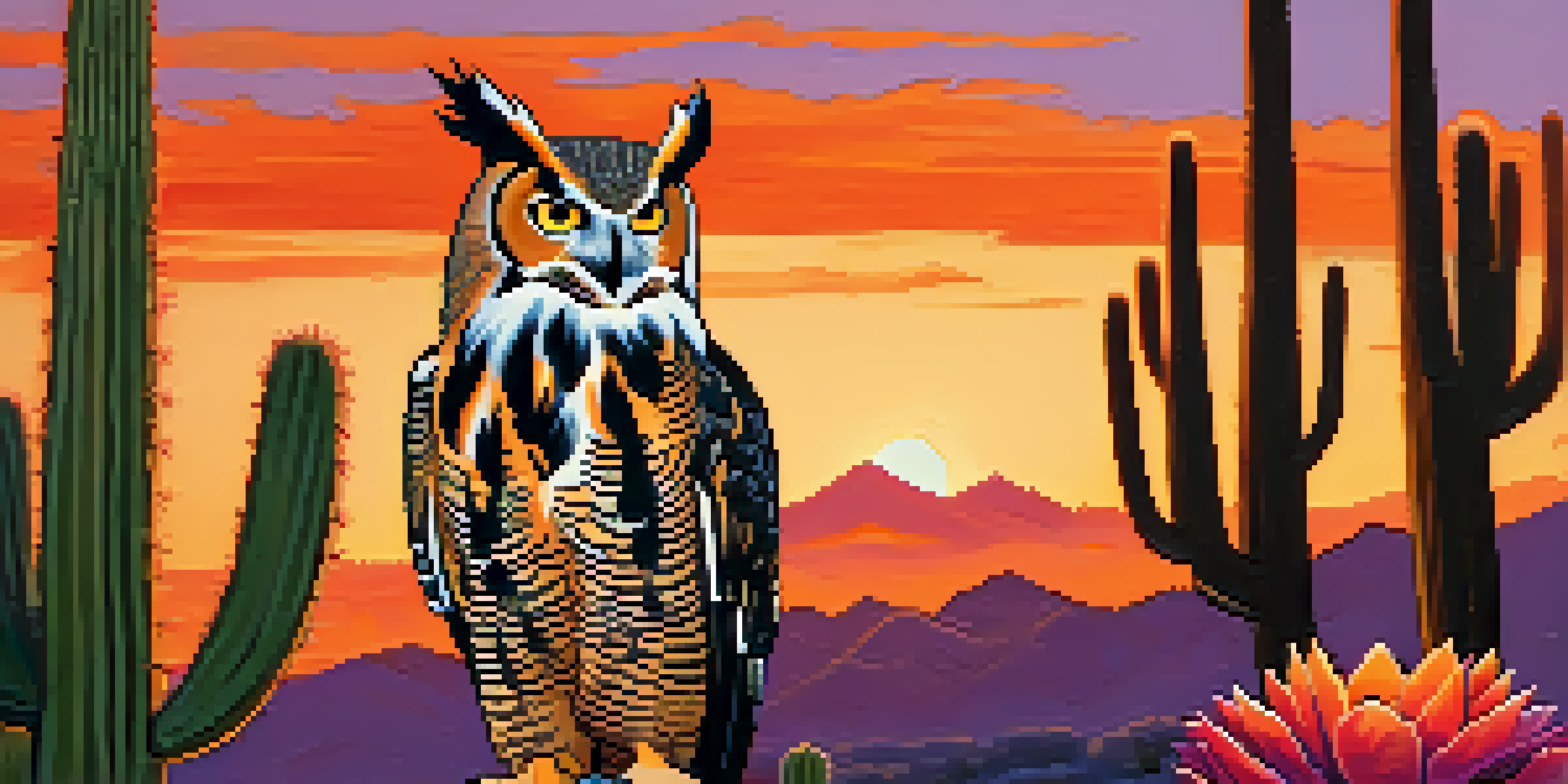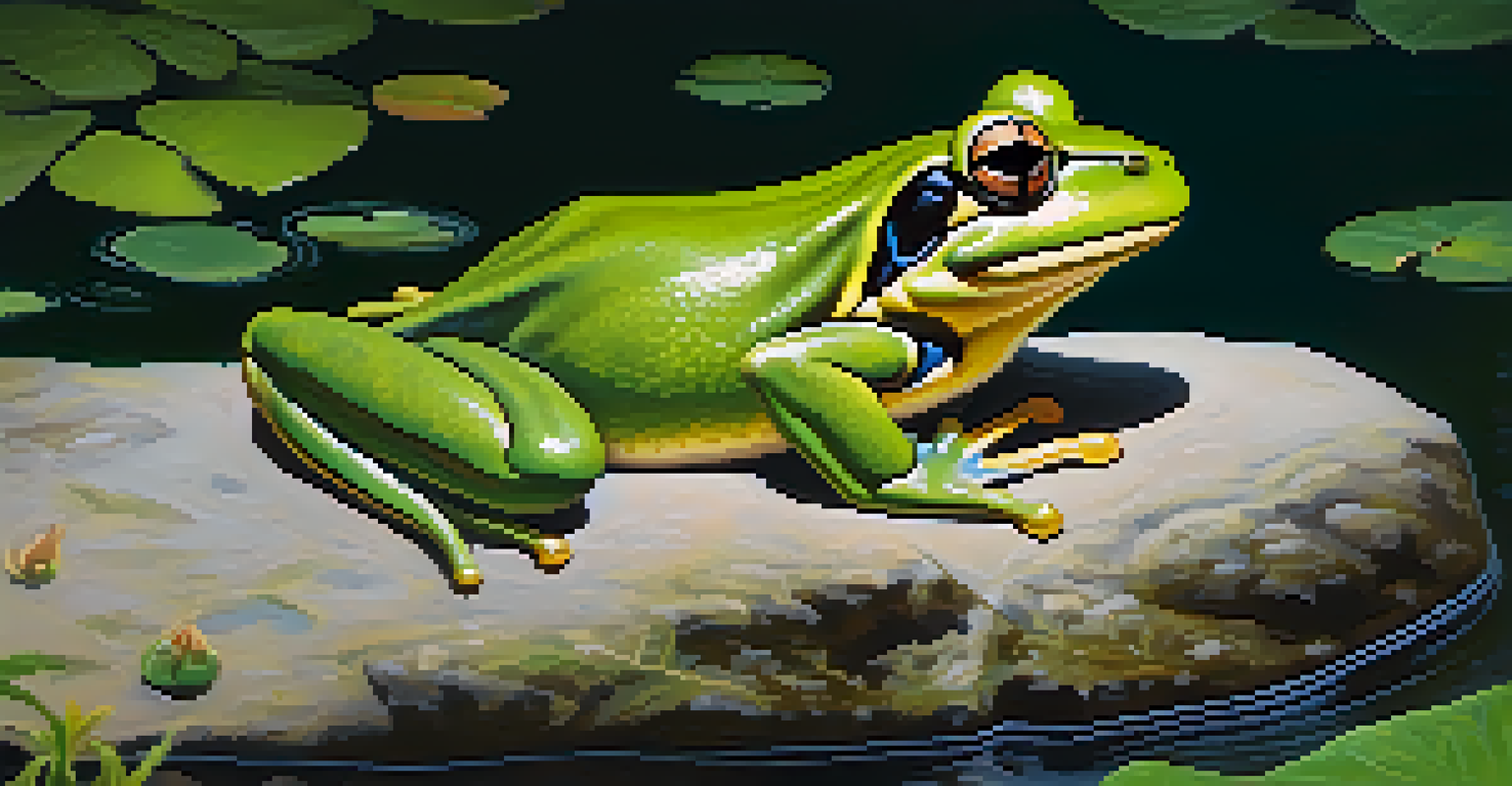Identifying Common Injured Wildlife in Arizona: A Guide

Understanding the Importance of Wildlife Care in Arizona
Wildlife plays a crucial role in Arizona's ecosystem, contributing to biodiversity and environmental balance. However, as urban areas expand, wildlife encounters are becoming more common, often leading to injuries. Understanding how to identify and care for injured wildlife not only helps the animals but also promotes a healthier ecosystem.
The greatness of a nation and its moral progress can be judged by the way its animals are treated.
In Arizona, various species face threats from vehicle collisions, habitat loss, and human interaction. By learning to recognize these injuries, we can take appropriate action to assist them. This guide aims to empower residents and visitors with the knowledge needed to respond responsibly to injured wildlife.
Caring for injured wildlife is a community effort. Whether you're hiking in the mountains or driving through suburban areas, being aware of the common injured species can make a significant difference. Let's dive into the specific animals you may encounter and how to identify their injuries.
Common Injured Wildlife: Birds in Arizona
Birds are among the most commonly injured wildlife in Arizona, often due to window strikes or predation. Species like the great horned owl and the American kestrel can be found injured along roadsides or in backyards. Recognizing these birds can help you determine if they need assistance.

If you spot a bird that appears lethargic or unable to fly, it could be suffering from a concussion or a broken wing. In many cases, these injuries require immediate care from a wildlife rehabilitator. It's essential to approach injured birds carefully, as they may be frightened and defensive.
Wildlife Care is Community-Centric
Caring for injured wildlife is a collective responsibility that requires awareness and action from both residents and visitors in Arizona.
To properly assist, try to contain the bird in a box or a quiet space until help arrives. Avoid handling them too much, as stress can exacerbate their injuries. Remember, it's always best to contact a local wildlife rescue organization for guidance.
Identifying Injured Mammals in Arizona
Mammals such as deer, coyotes, and rabbits are often victims of vehicle collisions in Arizona. Injuries may range from broken bones to severe lacerations. Learning to identify these injuries can be crucial for a timely intervention.
Wildlife conservation is not just the responsibility of government. It is a shared responsibility that requires the involvement of every citizen.
If you encounter a mammal that is limping or showing signs of distress, it's essential to assess the situation from a safe distance. Look for any visible wounds or signs of shock, such as rapid breathing or a lack of response. This can help you determine the severity of the injury.
In cases where the animal is in immediate danger or poses a risk to traffic, contacting local animal control or wildlife rescue is vital. They have the expertise to handle these situations safely and effectively.
Reptiles: Common Injuries and How to Help
Reptiles, like the Arizona rattlesnake or the desert tortoise, can also suffer injuries from encounters with humans or vehicles. While these creatures may seem less vulnerable, they too require our attention when injured. Understanding their common injuries can help in providing the right support.
Common signs of injury in reptiles include bleeding, a lack of mobility, or an inability to eat. If you observe these signs, it's crucial to approach the situation carefully, as some reptiles may become aggressive when threatened. Always wear gloves when handling them to ensure your safety.
Identify Common Injured Species
Recognizing injured wildlife, such as birds, mammals, reptiles, and amphibians, is essential for providing timely assistance and promoting a healthier ecosystem.
For reptiles, it's best to contact a specialized wildlife rehabilitator who understands the needs of these unique creatures. They can provide the necessary care and ensure a better chance of recovery.
Amphibians: A Hidden Threat to Wildlife
Amphibians like frogs and toads often go unnoticed but are equally susceptible to injuries in Arizona. Habitat destruction and pollution are significant threats to these creatures, leading to various health issues. Being aware of their presence is the first step in helping them.
Injuries in amphibians may manifest as skin lesions or signs of infection, which can be difficult to detect. If you notice a frog or toad that looks unwell or is not behaving typically, it may need assistance. Amphibians are sensitive to environmental changes, so even minor injuries can have severe consequences.
To assist, gently place the amphibian in a damp, cool area and contact a local wildlife rescue. Their unique physiology requires specialized care that only trained professionals can provide.
What to Do When You Find Injured Wildlife
Finding injured wildlife can be distressing, but knowing how to react is essential. Your first step should always be to assess the situation from a safe distance. Observe the animal for signs of injury, but avoid getting too close, as frightened animals can behave unpredictably.
If the animal appears to be in immediate danger, such as lying on a busy road, try to safely move it to a more secure location if possible. However, never put yourself in harm's way. The priority is your safety and that of the animal.
Know Legal Wildlife Assistance Rules
Understanding local wildlife laws is crucial to ensure that any efforts to assist injured animals are conducted safely and legally.
Once you have assessed the situation, contact a local wildlife rescue or animal control for guidance. They can provide the necessary support and ensure the animal receives the care it needs.
Legal Considerations for Assisting Injured Wildlife
When it comes to assisting injured wildlife, it's essential to understand the legal considerations involved. In many states, including Arizona, certain species are protected under wildlife laws. This means that handling or relocating them without proper authorization can lead to legal consequences.
Before intervening, familiarize yourself with local regulations concerning wildlife. This knowledge can help you navigate the situation more effectively and ensure that you’re acting within the law. If in doubt, always consult with wildlife authorities.

By respecting these laws, you not only protect yourself but also contribute to the conservation of Arizona's unique wildlife. It's crucial to act responsibly and ensure that injured animals receive the best possible care.
Promoting Wildlife Awareness in Your Community
Promoting awareness about injured wildlife is vital for fostering a compassionate community. By educating others on how to identify and assist injured animals, we can create a culture of care and responsibility. Share your knowledge with friends, family, and neighbors to amplify your impact.
Consider hosting workshops or community events focused on wildlife education. Engaging local schools or organizations can help spread the word and encourage more people to take action when they encounter injured wildlife. Together, we can create a safer environment for both humans and animals.
Remember, every small effort counts. By working together, we can make a significant difference in the lives of injured wildlife in Arizona, ensuring that they receive the care and support they need to thrive.